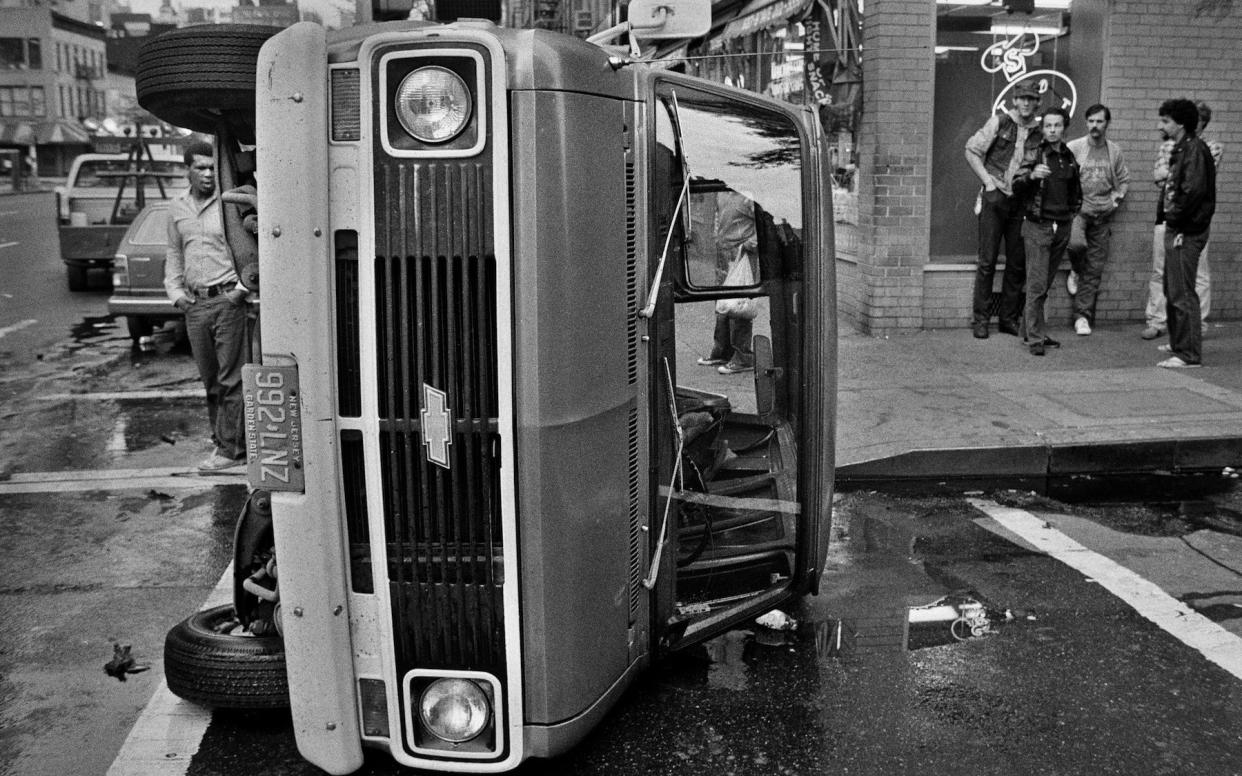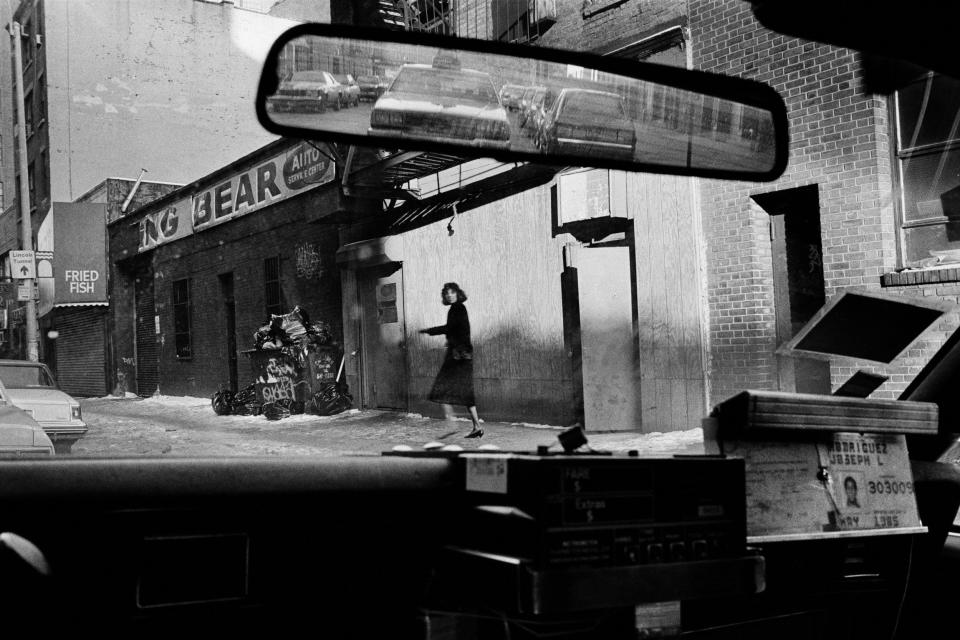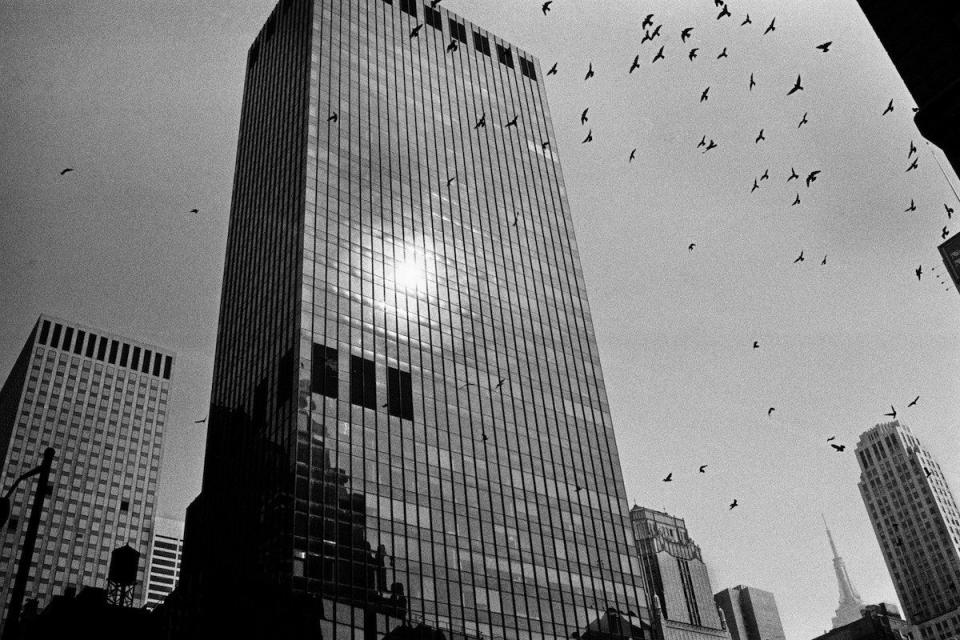Drive-by shooting: the New York taxi photographs of Joseph Rodriguez

- Oops!Something went wrong.Please try again later.
When I think back on what it was like to live in New York City from 1978 to 1987, the first thing that comes to mind is the old Chinese curse, “May you live in interesting times.”
In that nine-year span, it felt like the city was getting its teeth kicked in on a daily basis, encompassing as it did the dawn and high noon of the Aids crisis, one municipal budget crisis after another, leading to wage and hiring freezes, labour strikes and, in general, an overall deterioration, both physical and spiritual, in the everyday quality of life. Street crime was off the scale, cocaine turf wars raged, and, by the mid-to-late 1980s, the prevalence of crack cocaine – a nihilistic WMD if ever there was one – had begun to impose its own brand of devastation.
To drive a cab back then, as the photographer Joseph Rodriguez did, you either had to have a death wish or come to the job with such intuitive empathy/curiosity that to see and hear and sometimes engage with the cavalcade of humanity sliding in and out of your back seat trumped the nightly game of Russian roulette.
A friend of mine who drove a cab during those years told me about picking up a young couple outside a Downtown club in the post-midnight hours and being directed to drive up and down the West Side Highway from the Brooklyn Battery Tunnel to the George Washington Bridge until his passengers had finished servicing each other in the back seat, then drop them off where he originally picked them up. Returning to the line of waiting hacks in front of the club, his next fare, 30 minutes later, was the same woman with another man, apparently the boyfriend of record.
After giving the driver an address on the Upper East Side, the boyfriend immediately began complaining about spending an hour looking all over the club for her and demanding to know where she’d been hiding. Over the course of the trip, the girlfriend made occasional rear-view mirror eye contact with the driver, but his face apparently didn’t register until they arrived at the destination. As the couple headed for their building, she stopped short, then returned to the cab, gesturing for the driver to roll down his window. After studying his face, she finally asked: “Have we met before?”

To drive a cab in New York City, then as now, is to become invisible. In the back seat, separated from you by the glass security partition, your fares cease to think of you except as a navigational tool; a link between the steering wheel, brakes, and gas pedal. But if you’re of a certain cast of mind, you can embrace that invisibility to continuously school yourself on the infinite varieties of human experience.
Born in 1951, Rodriguez shares the overarching mission of all the great social documentarians, from Jacob Riis to Lewis Hine to Dorothea Lange, Walker Evans and Helen Levitt: to make visible those we choose not to see – the shunned, the ignored, the demonised. Some of his most powerful images are those of his first fares; the lone hustlers, sex workers, cross-dressers, and last-call leather bar patrons as they wrap it up in the existential zero hour between the end of night and the colourless first light of day. From portrait to portrait, he captures their defiance and their weariness, their dream-selves and their fatalism.

There’s also an element of monkish contemplation. The earliest hours of his shift offer him the mute beauty of a rising sun striking the high floors of a skyscraper, or of a major bridge in its misty predawn repose before bearing the onslaught of the day’s swarming traffic. He captures not the peace of these places, but the sense of utter abandonment, as if the absence of people is permanent and what we’re encountering is the abject leavings of a lost civilisation.
If Rodriguez’s aim is to evoke, through empathy, both pity for and outrage at the plight of others, one of the more effective strategies he employs is to work against the grain of suffering to capture the camaraderie of the street, the deep multi-generational ties of families, the succours of home, the small and large ceremonies that celebrate the various rites of passage in a person’s life.

There is a great sense of humility in these images; a sense that the artist in the more ragged moments of his own life could just as easily stand before his own camera as behind it. In the end, it all comes down to this – that in order to be a great street photographer, you need to love the street.

‘Taxi: Journey Through My Windows 1977-1987’, by Joseph Rodriguez (powerhousebooks.com, £29.99) is out on Dec 15. Funding support for the book was provided by The Economic Hardship Reporting Project (EHRP)

